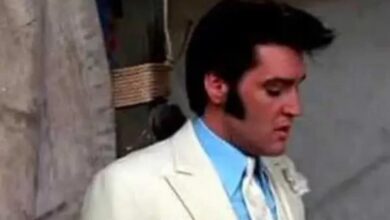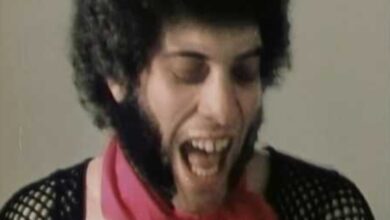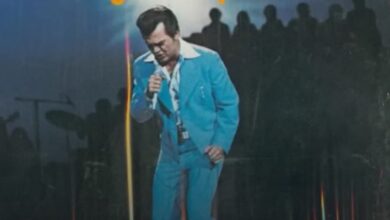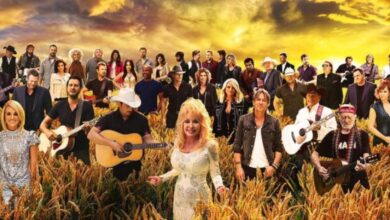The Cascades’ “Rhythm of the Rain” Captures Heartbreak and Climbs Global Charts in 1963
When “Rhythm of the Rain” was released in early 1963, few could have predicted just how far its delicate melody and wistful lyrics would travel. Performed by The Cascades, a relatively unknown pop group from San Diego, the song quickly found a home on radios around the world. It reached No. 3 on the Billboard Hot 100, No. 1 on the U.S. Billboard Easy Listening chart, and topped the charts in multiple countries including Ireland, Canada, and Australia. With its softly cascading arrangement, poetic heartbreak, and unforgettable opening thunderclap, “Rhythm of the Rain” became one of the most enduring ballads of the early 1960s—bridging doo-wop, pop, and soft rock with graceful simplicity.
The Cascades were formed in the late 1950s by a group of U.S. Navy servicemen stationed in San Diego. Originally named The Thundernotes, the band transitioned from instrumental surf rock to vocal pop as lead singer John Gummoe’s expressive voice came to the forefront. The band’s clean-cut image and romantic leanings were well suited to the early ’60s pop scene, where artists like The Lettermen and The Four Seasons were dominating the charts. What set The Cascades apart, however, was their ability to merge lush vocal harmonies with gentle, atmospheric arrangements that reflected more melancholy themes.
The story behind “Rhythm of the Rain” began with John Gummoe himself, who wrote the song while serving aboard a Navy ship. Inspired by a rainy night and the soft sound of falling raindrops on the ship’s deck, Gummoe channeled his homesickness and lost love into a simple but striking ballad. He later recalled writing the lyrics in a single sitting, letting the mood of the storm guide his thoughts. The metaphor of rain as both a comfort and a reminder of sorrow captured something universal—and gave the song its timeless quality.
The track was recorded at Gold Star Studios in Los Angeles, known for its signature echo chambers and rich sound. Produced by Barry De Vorzon, the session featured members of the famous Wrecking Crew—a group of top-tier session musicians who played on countless hits of the era. Among them was drummer Hal Blaine, whose subtle but steady rhythm laid the foundation for the song’s hypnotic feel. The signature opening of thunder and rain effects, paired with the sweeping celesta and string lines, created an atmosphere that perfectly complemented Gummoe’s gentle lead vocal. The arrangement was minimalist yet emotionally vivid, and the production quality was years ahead of its time.
Upon its release in January 1963, “Rhythm of the Rain” was an immediate hit. It spent 14 weeks on the Billboard Hot 100, peaking at No. 3 and becoming one of the highest-charting ballads of the year. The song also reached No. 1 on Billboard’s Easy Listening chart and charted in the Top 5 in over a dozen countries. In the UK, it reached No. 5, proving that The Cascades had crafted a truly international success. The single sold over one million copies worldwide and was awarded a gold disc—an extraordinary feat for a band with only one major hit.
Culturally, “Rhythm of the Rain” tapped into a moment when American pop was shifting from upbeat doo-wop and surf songs toward more introspective, emotional storytelling. It offered a gentle alternative to the rock ‘n’ roll bravado of the previous decade and set the stage for the rise of more sensitive singer-songwriters later in the 1960s. Its wistful tone resonated with listeners of all ages, making it a favorite not just on pop radio but on adult contemporary playlists and jukeboxes across the country.
The success of the song gave The Cascades a sudden surge of fame. They toured nationally and internationally, appearing on television shows and enjoying a brief but intense period in the spotlight. However, they were never able to replicate the success of “Rhythm of the Rain.” Follow-up singles like “The Last Leaf” and “Shy Girl” received modest attention but didn’t chart as high. Still, the impact of that one song was enough to secure the group a place in pop history.
Musically, the influence of “Rhythm of the Rain” was wide-reaching. It helped popularize the soft rock and pop ballad sound that would dominate adult-oriented radio formats throughout the 1960s and 1970s. Its restrained emotion and melodic clarity can be heard in later acts like Bread, The Carpenters, and even in the gentler work of Paul McCartney. The use of environmental sound effects also opened doors for producers to experiment more with atmosphere and mood in pop music.
Over the years, “Rhythm of the Rain” has been covered by dozens of artists across genres. Gary Lewis & The Playboys, Dan Fogelberg, and Jason Donovan all offered their own interpretations, each reflecting the era in which they were released. Donovan’s 1990 cover brought the song back into the UK Top 10, nearly 30 years after its original release. Despite these many renditions, John Gummoe’s original remains the definitive version—its sincerity and understated beauty unmatched.
At the time of the song’s release, The Cascades were also witnessing dramatic shifts in the music world. Just months after their chart success, The Beatles would arrive in America, completely transforming the landscape of pop. While “Rhythm of the Rain” belonged to the softer, more romantic sensibilities of early ’60s pop, it held its ground as a reminder of a different emotional register—one rooted in vulnerability rather than rebellion.
In the decades since, the song has maintained a steady presence in pop culture. It’s appeared in numerous films, television shows, and commercials, often used to evoke nostalgia or romantic melancholy. It remains a staple of oldies radio and is frequently cited by musicians and critics alike as one of the most beautiful pop ballads ever recorded.
The song’s long-term legacy is not only in its chart success but in its emotional endurance. It speaks to the universal experience of longing, loss, and memory—emotions that remain relevant regardless of musical trends. Even now, more than 60 years after its release, the song’s opening thunder and delicate melody continue to draw listeners in.
Though The Cascades would not enjoy sustained chart success beyond this single, “Rhythm of the Rain” ensured their place in music history. The song was later recognized by BMI as one of the most played songs on radio and television in the 20th century—a testament to its timeless appeal.
Ultimately, “Rhythm of the Rain” is more than a pop hit—it’s a piece of musical poetry that continues to resonate. For a fleeting moment, The Cascades captured the sound of sadness wrapped in beauty, a feeling both intimate and expansive. It remains one of the most beloved songs of the early ’60s, and a reminder that sometimes, simplicity speaks loudest of all.



